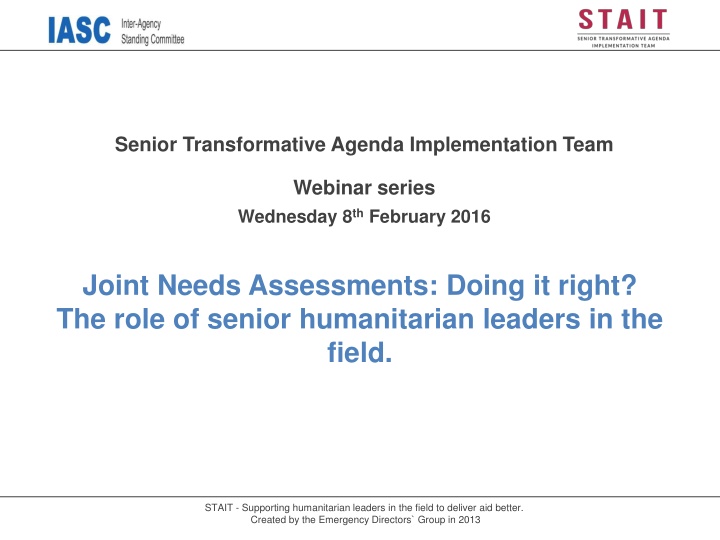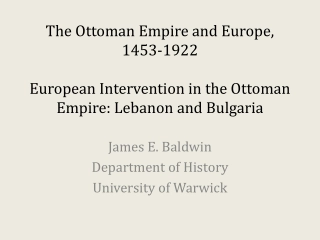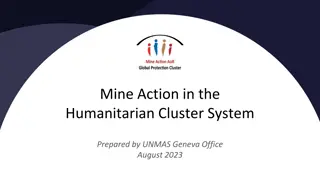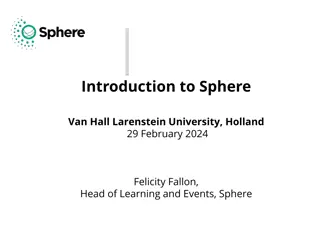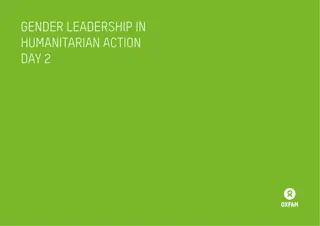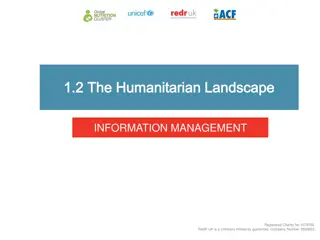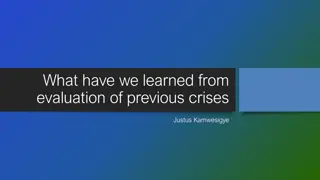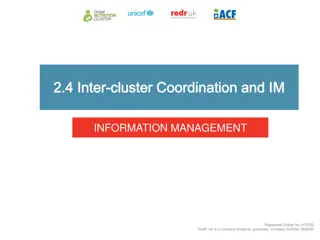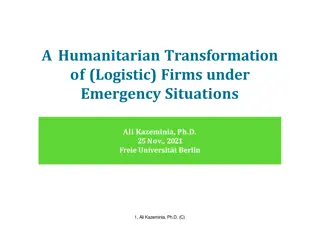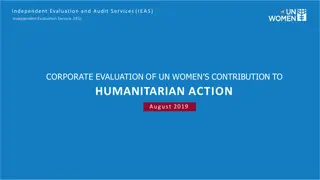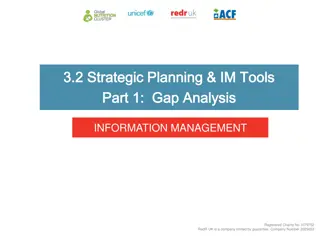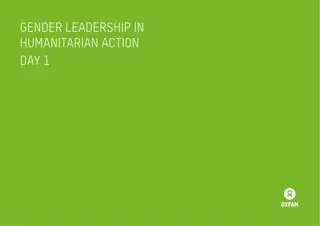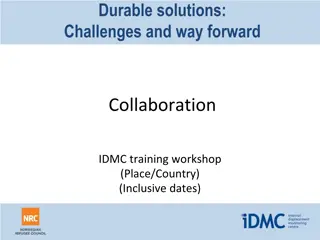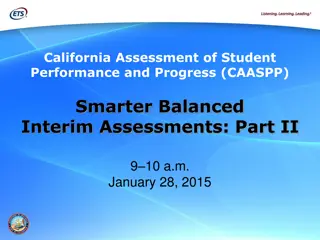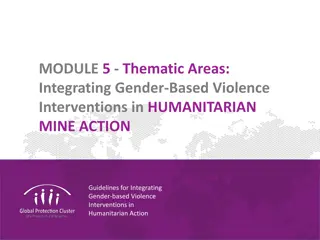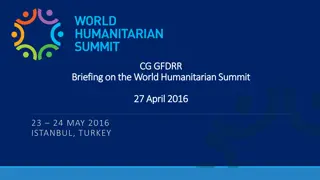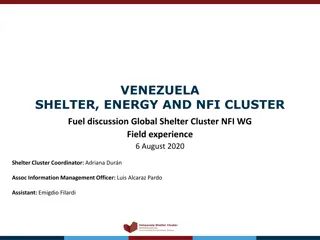Implementing Joint Needs Assessments for Humanitarian Operations
Joint Needs Assessment is crucial for effective humanitarian operations at field level. It provides a single, credible evidence base, avoids duplication of efforts, ensures harmonized data collection, sharing, and a unified statement of needs. This enables better planning, response, and donor support.
Download Presentation

Please find below an Image/Link to download the presentation.
The content on the website is provided AS IS for your information and personal use only. It may not be sold, licensed, or shared on other websites without obtaining consent from the author.If you encounter any issues during the download, it is possible that the publisher has removed the file from their server.
You are allowed to download the files provided on this website for personal or commercial use, subject to the condition that they are used lawfully. All files are the property of their respective owners.
The content on the website is provided AS IS for your information and personal use only. It may not be sold, licensed, or shared on other websites without obtaining consent from the author.
E N D
Presentation Transcript
Senior Transformative Agenda Implementation Team Webinar series Wednesday 8th February 2016 Joint Needs Assessments: Doing it right? The role of senior humanitarian leaders in the field. STAIT- Supporting humanitarian leaders in the field to deliver aid better. Created by the Emergency Directors` Group in 2013
Speakers Peter de Clercq Deputy SRSG and Resident and Humanitarian Coordinator, Somalia John Ging Director of operations OCHA Panos Moumtzis STAIT Team Leader Webinar facilitator Joint Needs Assessments: Doing it right? The role of senior humanitarian leaders in the field
What Joint Need Assessment is all about, what does it mean for operations at field level and why is it important? Photo credit: OCHA Joint Needs Assessments: Doing it right? The role of senior humanitarian leaders in the field
Importance of joint needs assessments John Ging Director of operations OCHA 1. Single, credible evidence base for humanitarian operations A useable and credible evidence base will give donors the confidence to support operations, and will help better planning and response. 2. Avoiding a multiplicity of disconnected information-collection exercises, and additional burdens on affected people We need to avoid the current practice where many different organisations turn up in communities to collect information, without delivering assistance. We need to get information, but we need to get it sensibly and without raising expectations. Joint Needs Assessments: Doing it right? The role of senior humanitarian leaders in the field
Effective joint assessment of needs incorporates 1. Harmonized, complementary, efficient data collection We need to have standardised data sets across different humanitarian partners, so data can be collated from different partners to allow for analysis to be done without translating what different data might actually mean. Let s try to be consistent with data collection methods and types of data. John Ging Director of operations OCHA 2. Data sharing and interoperable data which analysed jointly Different agencies should share their data and information to allow all the different information that is collected to be put together. This will provide a consistent picture of needs and help response planning. 3. A single, authoritative statement of affected people s needs (e.g. HNO or equivalent) Having harmonized data collection, and sharing information allows for a single authoritative statement of needs to be produced. The Humanitarian Needs Overview is that document, and we have produced this in several places. The Syria example is particularly impressive. Joint Needs Assessments: Doing it right? The role of senior humanitarian leaders in the field
The Grand Bargain commitments provide for: 1. "a single, comprehensive cross-sectoral, methodologically sound and impartial overall assessment of needs for each crisis," and; John Ging Director of operations OCHA 2. For partners to "coordinate and streamline data collection to ensure compatibility, quality and comparability and minimizing intrusion into the lives of affected people. It is hoped that the Grand bargain commitments will lead to an alignment of data collection efforts, sharing results between agencies and NGOs, and providing a solid and credible evidence base for decision-making and an effective response. We have too often seen a prorietory approach to information from some humanitarian actors. We need to overcome this, and the commitments to the Grand Bargain will do this. Joint Needs Assessments: Doing it right? The role of senior humanitarian leaders in the field
World Humanitarian Summit and the Grand Bargain: What is the final agreement on Joint Needs Assessment? Photo credit: OCHA Joint Needs Assessments: Doing it right? The role of senior humanitarian leaders in the field
Specialised organisations can support broader joint needs assessment efforts by John Ging Director of operations OCHA 1. Filling information gaps (sectoral, geographical, population groups) 2. Building capacities of partners 3. Supporting triangulation of data The Grand Bargain discussed the possibility of using specialist data collection and needs assessment organisations to feed agencies and NGOs with information on needs. However, this was not an outcome of the World Humanitarian Summit ..but, humanitarian response should not ignore the opportunity to use specialist capacity to use particular methodologies and technologies to produce a stronger assessment, support capacity building efforts (particularly with national and local partners). Joint Needs Assessments: Doing it right? The role of senior humanitarian leaders in the field
As Humanitarian Coordinator what are the leadership steps you took to put in place Joint Needs Assessment in Somalia? Joint Needs Assessments: Doing it right? The role of senior humanitarian leaders in the field
Structured direction from the Humanitarian Country Team (HCT) was provided to the Inter Cluster Group to operationalize a joint needs assessment Common agreement within the HCT of what the senior leadership (HCT) needed in terms of information HCT agreed a clear need for a joint assessments beyond the Food and Nutrition focused FSNAU bi-annual analysis HCT recognised the variety of different actors, capacities and geographic coverage on the ground to successfully take on a joint needs assessment HCT provided clear guidance to the Inter-Cluster Group on their requirements from a needs assessment Close relationship between the HC and OCHA as a key actor at the inter-cluster level to take the strategic vision to operational Confidence in the inter-cluster group to identify processes and resources to organise a joint needs assessment Peter de Clercq Deputy SRSG and Resident and Humanitarian Coordinator, Somalia Joint Needs Assessments: Doing it right? The role of senior humanitarian leaders in the field
HC delegated the operationalization / organizational aspects of the joint needs assessment to the Inter Cluster Coordination Group: Peter de Clercq Deputy SRSG and Resident and Humanitarian Coordinator, Somalia OCHA leadership through the Inter-Cluster Group was critical Inter-Cluster Group identified critical resources and organisations that were well-placed to lead the technical aspects of a joint needs assessment Critical role of the REACH project to work through the clusters to standardize data collection methods and nail down a common approach to the needs assessment across the clusters Somalia Initial Rapid Needs Assessment Tool (SIRNA) HCT-ICCG relationship and continuous exchange to maintain focus on the requirements of the needs assessment, and to provide guidance and support Joint Needs Assessments: Doing it right? The role of senior humanitarian leaders in the field
Other critical actors in the process to provide credible information for decision-making and resource mobilisation Peter de Clercq Deputy SRSG and Resident and Humanitarian Coordinator, Somalia Information Management Working Group (IMWG) worked closely with the ICCG and the REACH project to standardize data and information Clusters provided initial analysis of the data and information to produce information to the HCT to make strategic decisions Technology is becoming more commonly used which helped support a common methodology for gathering data (mobile data collection) Regional Cluster Focal points supported the implementation of the joint needs assessment across the country Joint Needs Assessments: Doing it right? The role of senior humanitarian leaders in the field
What are the obstacles you faced and how did you overcome them? Photo credit: OCHA Joint Needs Assessments: Doing it right? The role of senior humanitarian leaders in the field
Major contextual differences between 2011 famine and 2016-2017 (pre)famine National capacities: Stronger National and Federal institutions permitted greater expansion into areas which were difficult to reach logistically More systematic collaboration with State-level disaster management authorities (also utilising mobile data collection methods) Accountability: stronger linkages between HCT, ICCG, Clusters Higher consistency between regional, national and international levels leading to higher credibility of resource mobilisation Peter de Clercq Deputy SRSG and Resident and Humanitarian Coordinator, Somalia Joint Needs Assessments: Doing it right? The role of senior humanitarian leaders in the field
Number of Joint Assessments by Year 18 16 Peter de Clercq Deputy SRSG and Resident and Humanitarian Coordinator, Somalia 14 12 10 8 6 4 2 0 2016 2015 2014 2013 2012 2011 2010 Joint Needs Assessments: Doing it right? The role of senior humanitarian leaders in the field
Obstacles faced in implementing Joint Needs Assessments Steps taken to overcome the challenges Stronger HCT with coherent vision Bringing all actors behind a common vision and different agencies and organisations together Access and security: areas of the country are still difficult to reach and operate in and information cannot always be verified Use of technology; regional and sub- regional ICCGs; Local/community level partnerships Support to local disaster management/humanitarian coordination institutions National capacity is getting stronger, but the ability to bring data together and provide reliable analysis requires stronger and more robust institutions and national actors Assessment fatigue Coordinating assessments replacing agency or cluster specific fragmented need assessments Joint Needs Assessments: Doing it right? The role of senior humanitarian leaders in the field
Senior Transformative Agenda Implementation Team What is STAIT? The Senior Transformative Agenda Implementation Team (STAIT) was created by the Emergency Directors Group (EDG) in December 2013. Its purpose is to provide peer support to Humanitarian Coordinators (HCs) and Humanitarian Country Teams (HCTs) to strengthen the effectiveness of humanitarian response in the field. The team reports to the EDG, is hosted by OCHA, and supported administratively by UNDP. Contact us: STAIT@un.org;www.deliveraidbetter.org All webinar recordings are available on: www.youtube.com; www.humanitarianresponse.info/topics/transformative-agenda
